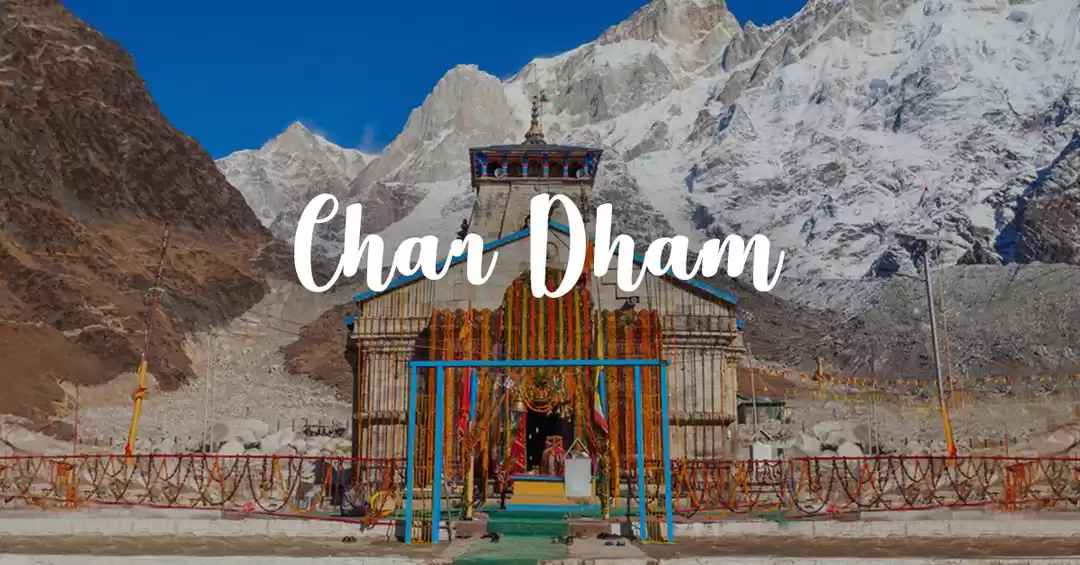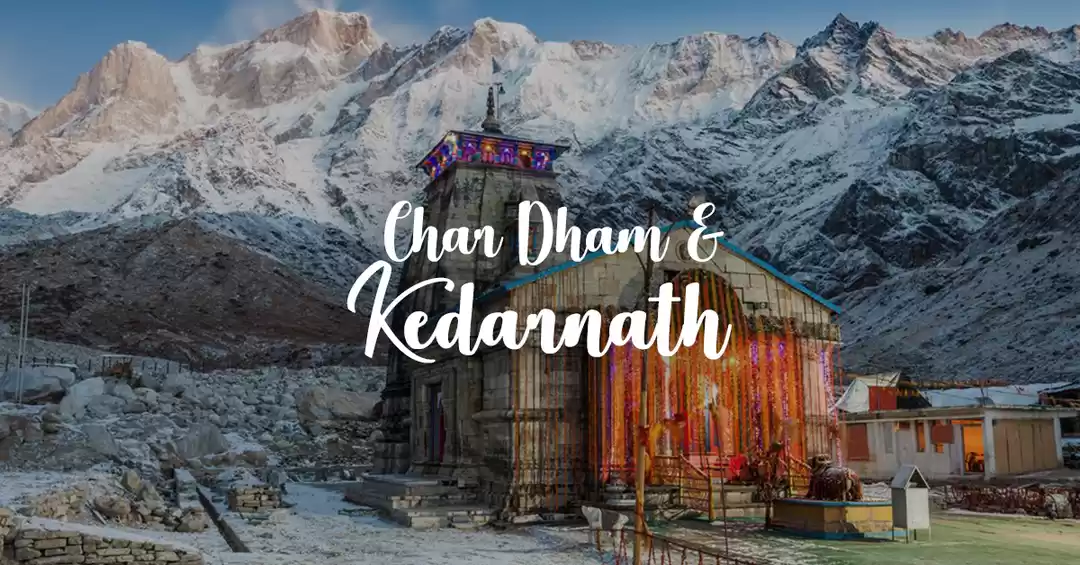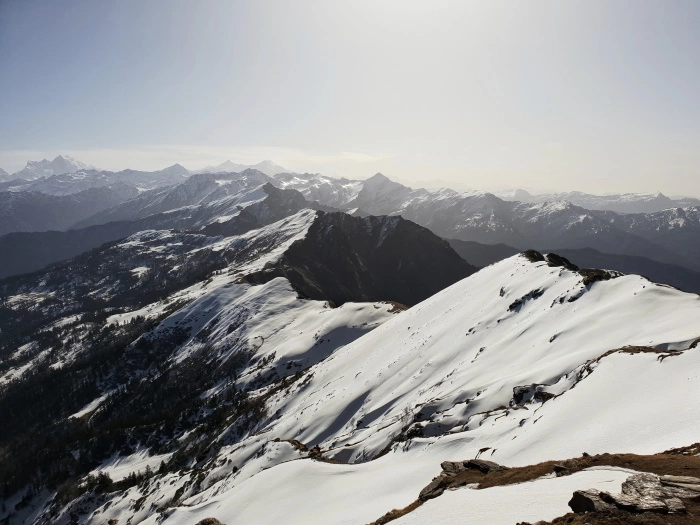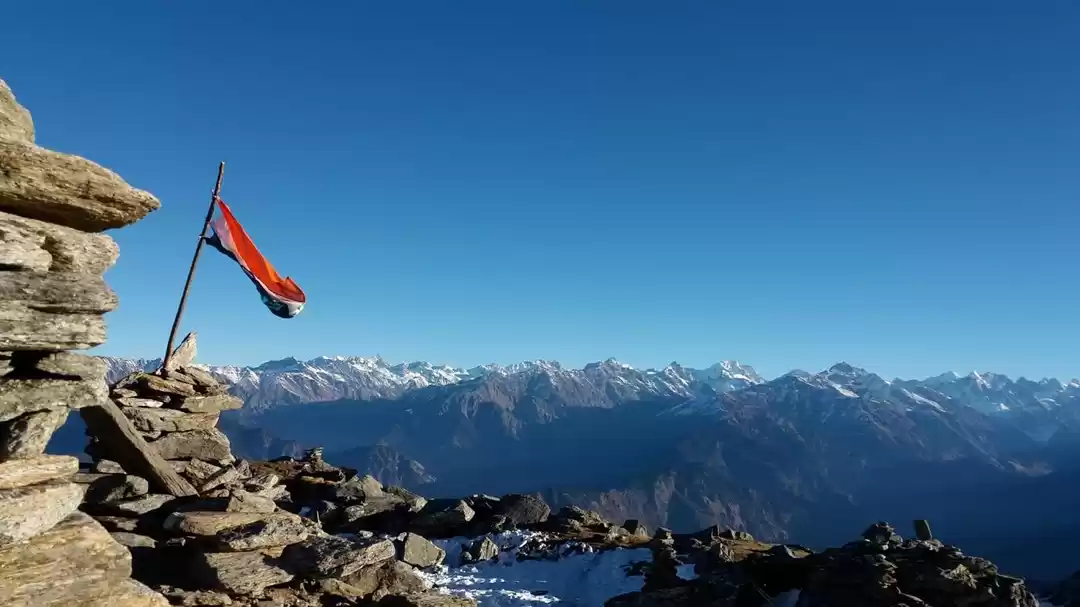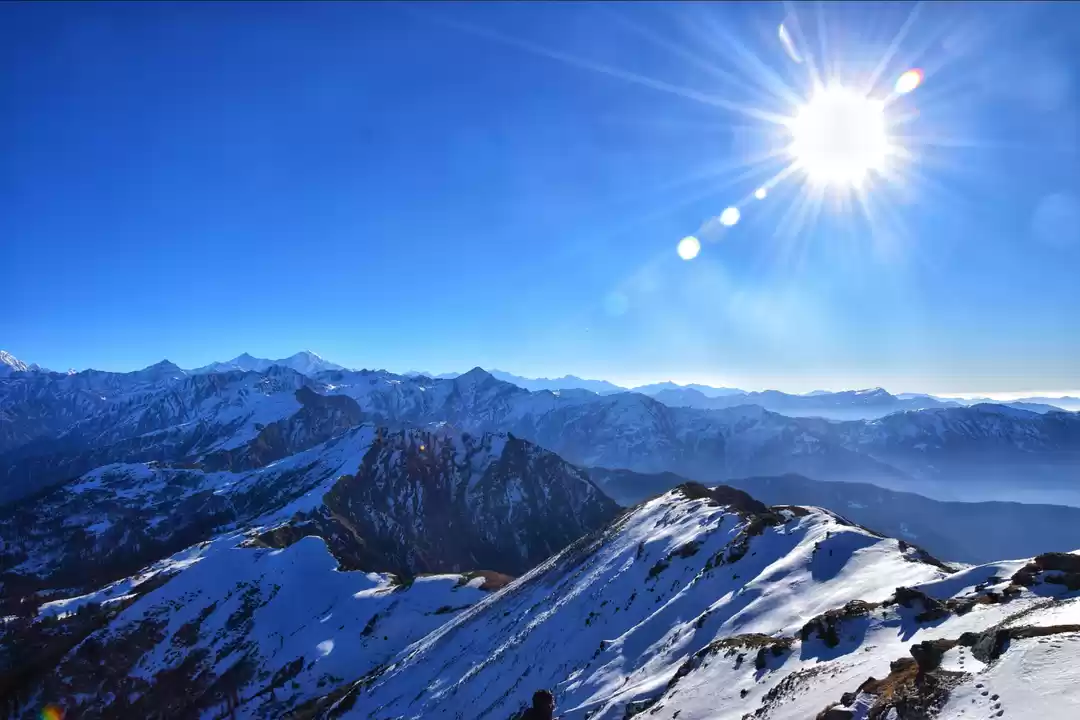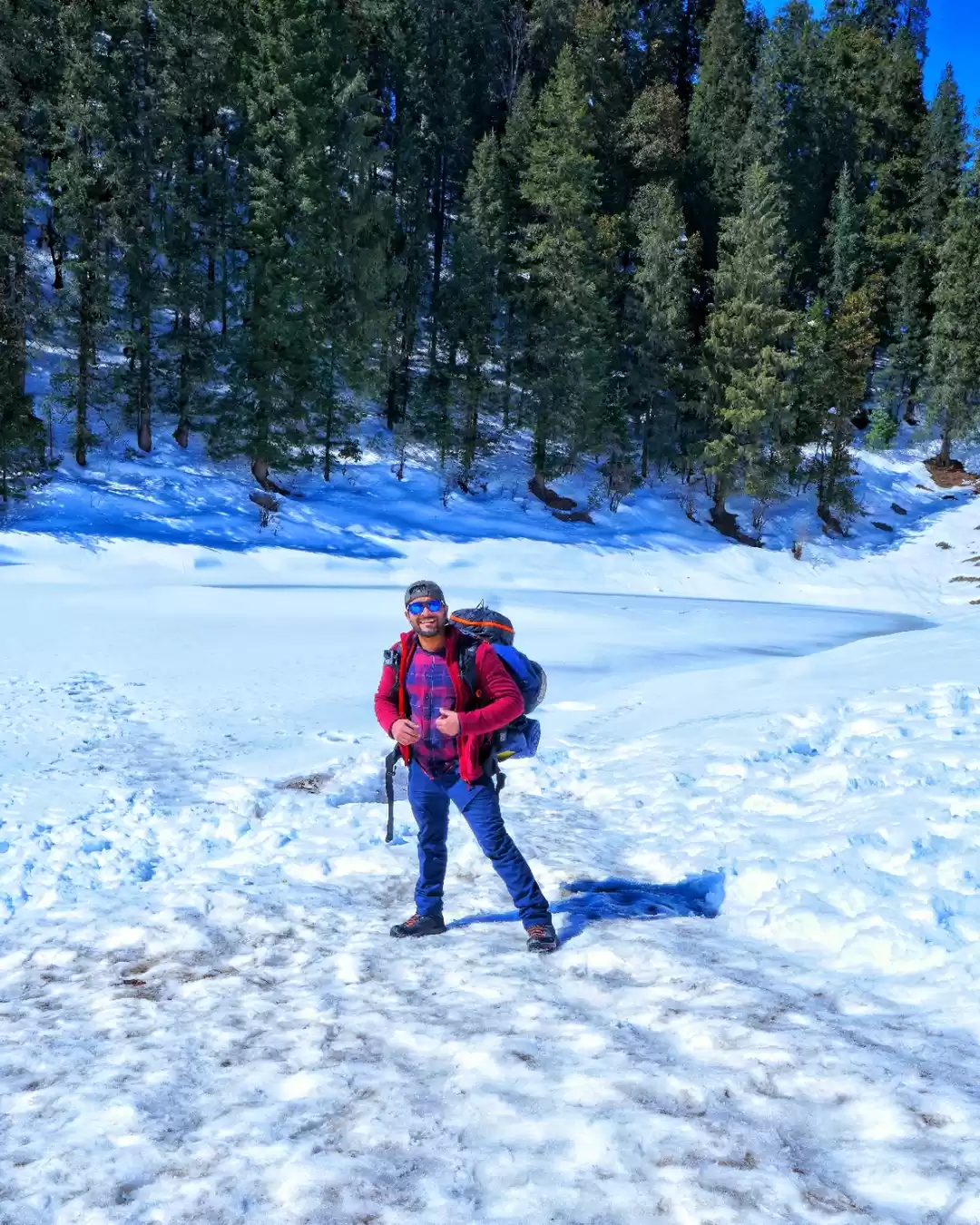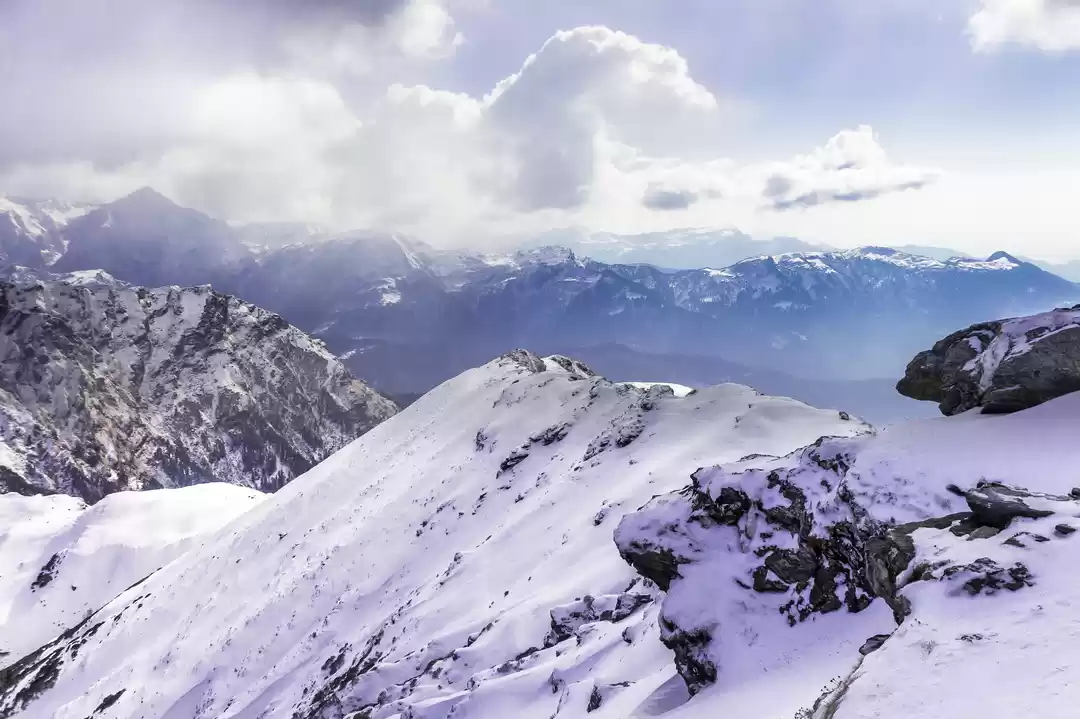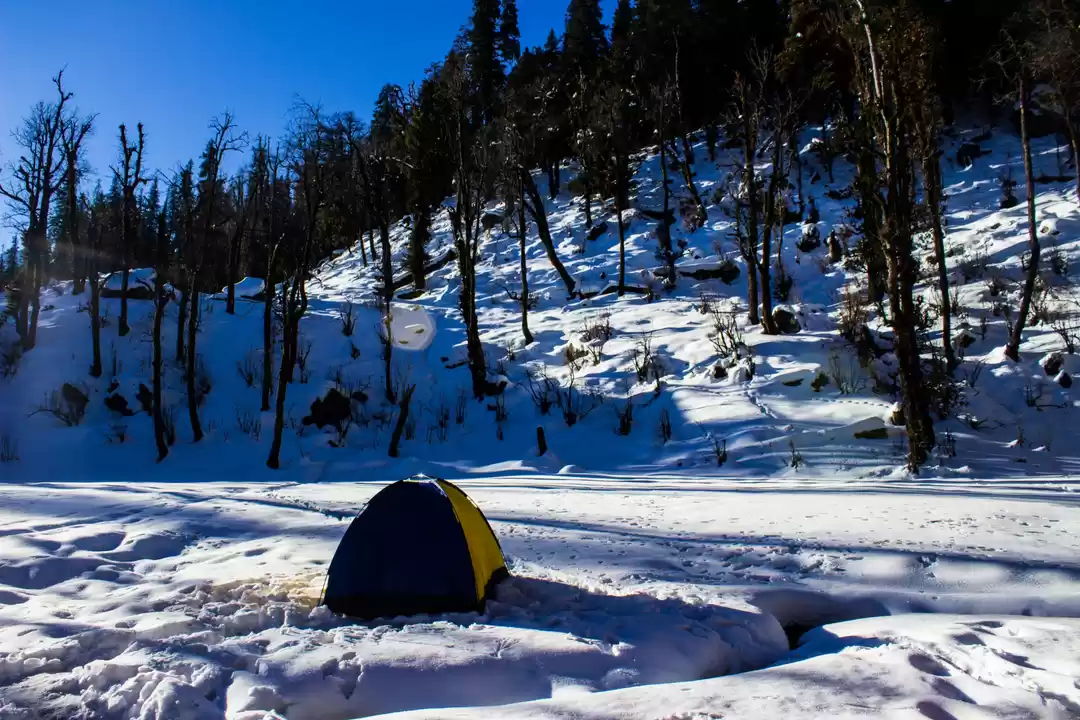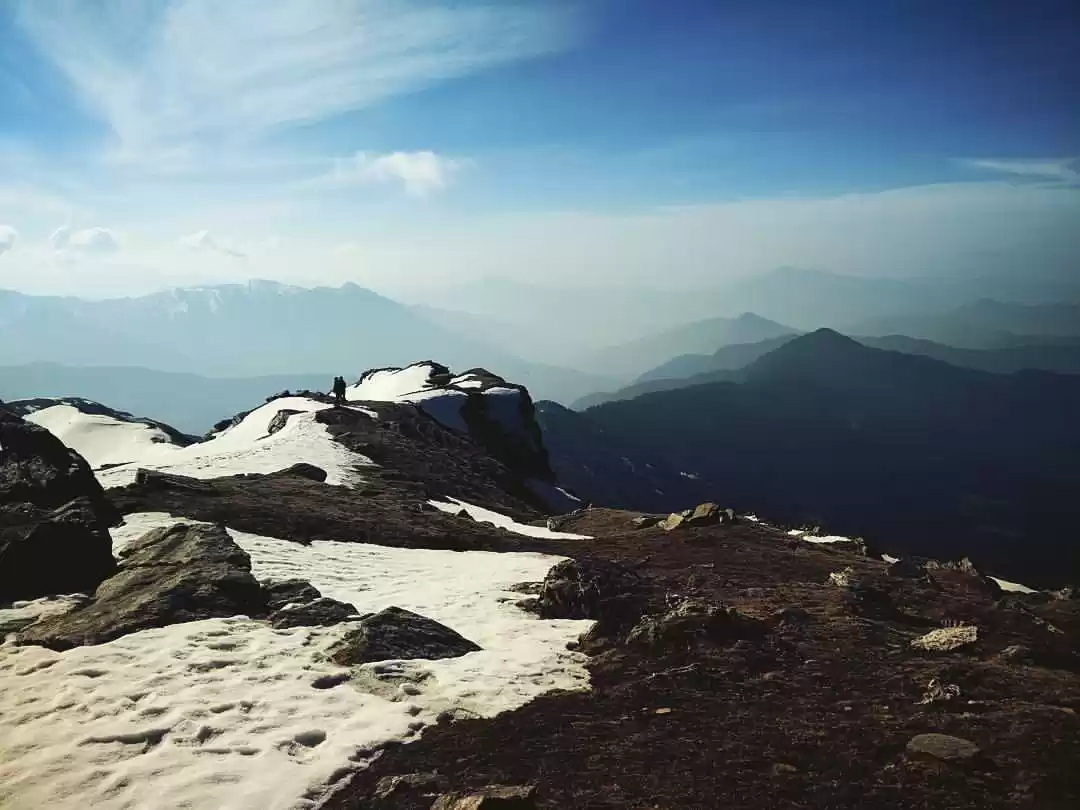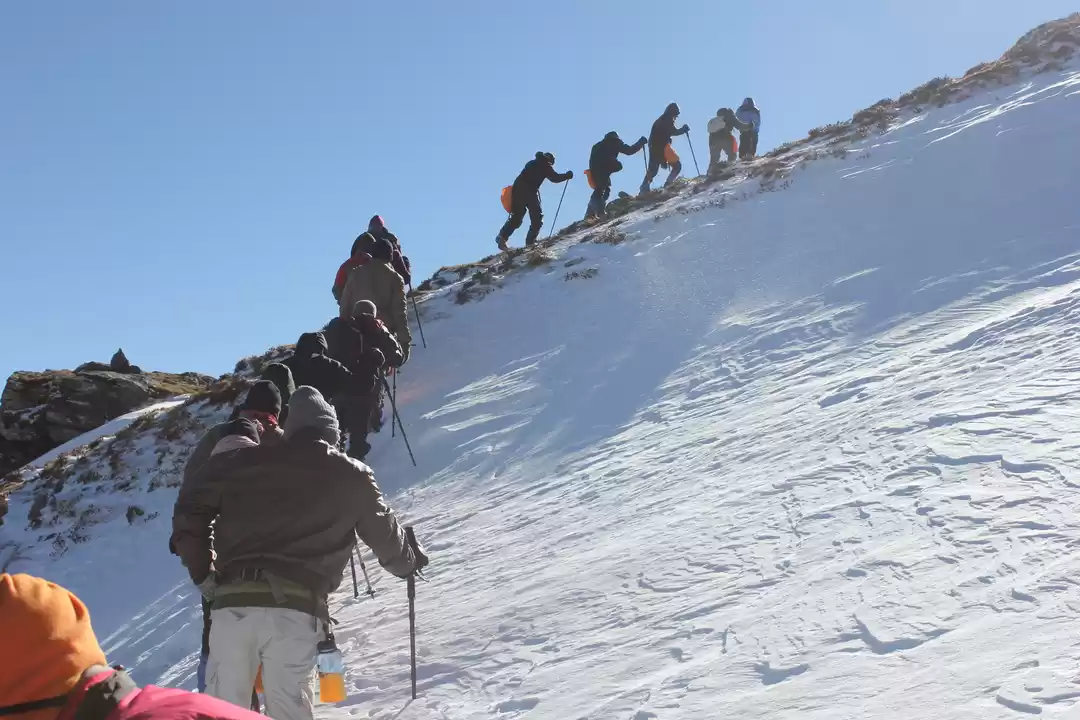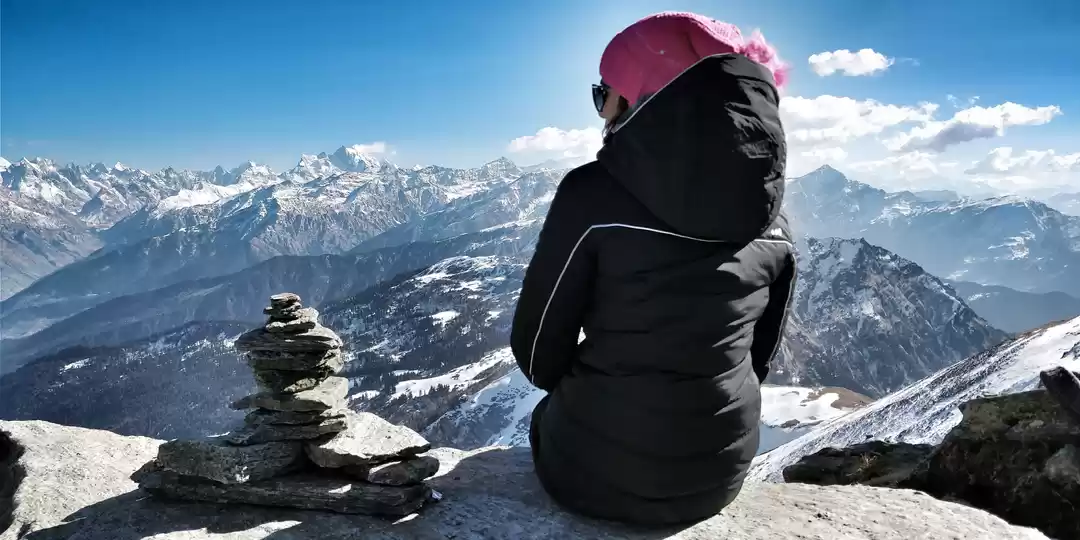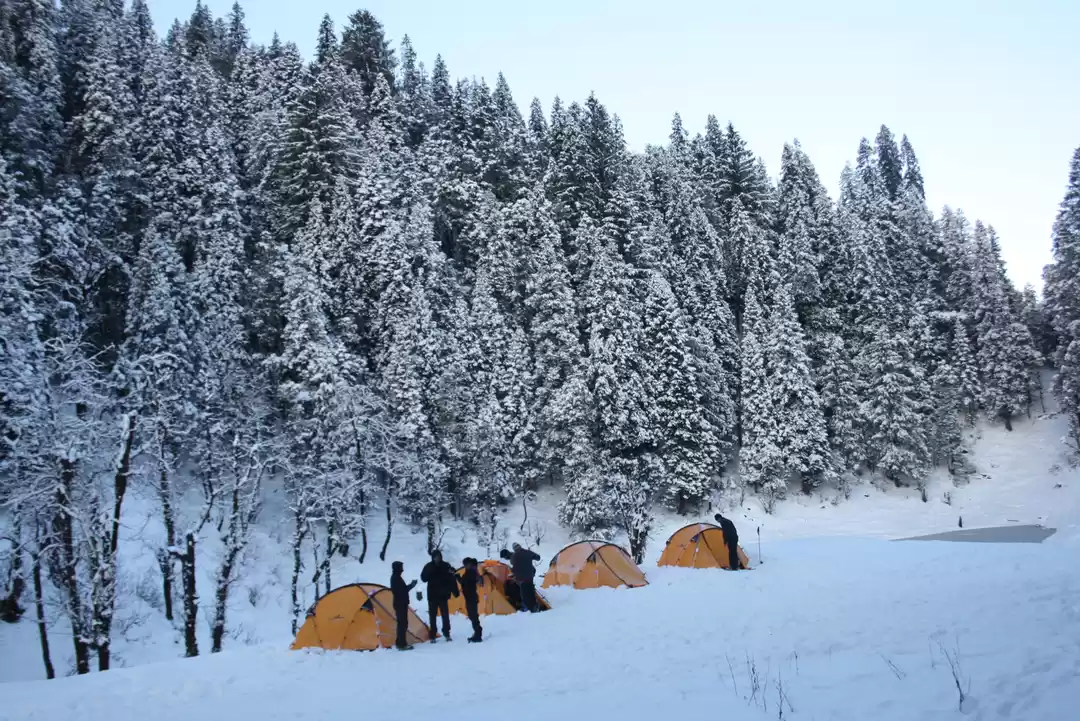
Being an aspirant for high altitude trekking and mountaineering, the Basic Mountaineering Course has been on my to-do list forever. Having done quite a few summer treks in the mighty Himalayas, I decided to do a winter trek this time. So here's the story of my trek to Kedarkantha summit (or rather not). Various blogs would've been written about this beautiful winter trek, but what's better than a unique near-death (some might have gotten an idea looking at the name, while some might find it exaggerated) experience which created memories forever, where not many things happened according to the plan, which's just the way I like it. These kind of experiences make you stronger and better prepared for the challenges in the future, also encouraging you to try your hand at writing about it.
When Divyaj and I decided to go for a trek in the winters, there were a few options, Chandrasheela, Kuari pass and Kedarkantha being some of them. Being a winter trek, I knew that the highest altitude of the trek wouldn't be above 13,000 ft. After taking a look at the beautiful descriptions and absolutely stunning pictures on various websites, we finalised Kedarkantha, which was supposed to be a easy-moderate trek (as it turns out, it wasn't). This trek was a short one, only 4 days of trek, as the altitude was less. We came from Pune, so there were always going to be two extra days of travel.
Finally, the much awaited leave began and so did our journey to the airport. We boarded a flight to Delhi hoping that the pollution wouldn't get the better of us there. We roamed about in Delhi and eventually boarded the Nanda Devi express to Dehradun that night. In the train, we were joined by two fellow trekkers from Chennai, two of the most interesting people I have ever met. The first impression was of a to-be-married couple, but we were surprised when we got to know they were married 5 years ago and have a 3-year old girl. They had left her at her grandparents'. My parents also used to do the same thing when they went trekking, leave me to my grandmother and I used to count the days on my blackboard. So as we got to know each other, we also got news which kind of dented our excitement for the trek. One of the batches to Kedarkantha had posted photos of the summit and there were only patches of snow even at the summit.
Day 1 : Dehradun to Naitwar (5,600 ft)
The trek starts from Naitwar in Uttarakhand. Our travel from Dehradun to Naitwar the next day was booked by Indiahikes. We got into a Tempo traveller along with a group of 7 Delhi-ite engineering students. The road travel is always accompanied by 'Avomine' and dozing off for a couple of hours as a result of that. As we crossed Mussoorie, the cold began to set in. The road passes through Barkot, Purola (where we had lunch), Mori before getting to Naitwar.



We drove through the forests and the meandering ghats till we reached the beautiful roads alongside the crystal clear waters of the Tons river. The travel was a long and tiring one, and we reached our beautiful guesthouse at Naitwar in the evening.

There, we met our trek leader Ashwin, and Divyaj and I pestered him, asking him about solo trekking and his experiences, especially considering that we were of the same age (of the same engineering background as well). Whenever you walked upto him, there was a constant smile greeting you along with a helping hand. We were also introduced to the two local guides, who would be accompanying us all along, Santosh and again, Santosh. They briefed us about the itinerary of the trek. Even at 5,600 ft, we had to layer up to fight the winter as it really became cold at night. Ashwin also told us about the problems people face during treks like Acute Mountain Sickness (AMS) and other severe conditions if they are not dealt with properly. The two most important things when you go for high altitude treks are hydrating (drinking lots and lots of water regularly, even if one isn't thirsty) and layering up (putting on layers of clothes to get acclimatized to the altitude). They also checked our oxygen and pulse readings twice or thrice each day, to check if our body was coping up with the cold and high altitude.
Day 2 : Naitwar (5,600 ft) to Julota (8,950 ft)
The first thing the Indiahikes leader mentioned was the route they took, as many other groups generally go by the alternative Sankri route. This day was pretty basic trekking under the sun, which we, from Maharashtra, are pretty used to. So we began very late as per trekking standards and were accompanied by the trekker's best friend in the mountains, a dog, Simru.


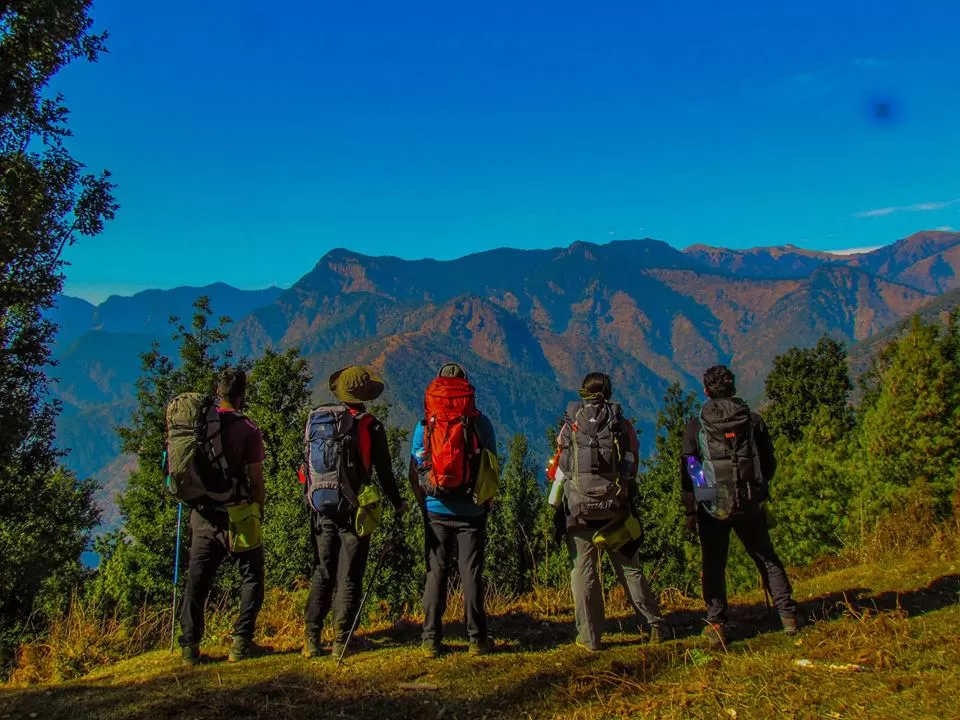
I always carry a camera with me for my treks and I could use it quite often as it was a pretty easy trek to start with. We went through a small village where many local kids were very excited to see us. Some of us played with them, while some clicked photographs with Simru.

The first day was a gradual ascent most of the time, followed by a pretty steep one at the end. Divyaj and I were always leading the way with one of the guides. Some of the trekkers found it tough as we covered around 6.5 kms in the sun after starting quite late. There was also a 'Maggi and Chai' point in between. We reached our campsite at Julota where 'Nimbu Sharbat' was eagerly waiting for us, followed by a pretty late lunch. Just when we got our tents and began to layer up, the sun started to go down. In winter in north India, the day is very short and the early sunset kept all the photographers busy.



They always say : Go to the mountains with your questions, and you'll surely find answers by the time you return. This was somewhat true for me too, when a thought came to my mind that trekking was something I'd surely be good at. First night at Jalota, we were greeted by a clear sky and a perfectly cool atmosphere for stargazing. Lying on the grass, looking at the sky full of stars, one could feel the sky freeing the clutter and the distractions. I would've loved to sleep out under the stars but the dropping temperature forced us back into our tents.
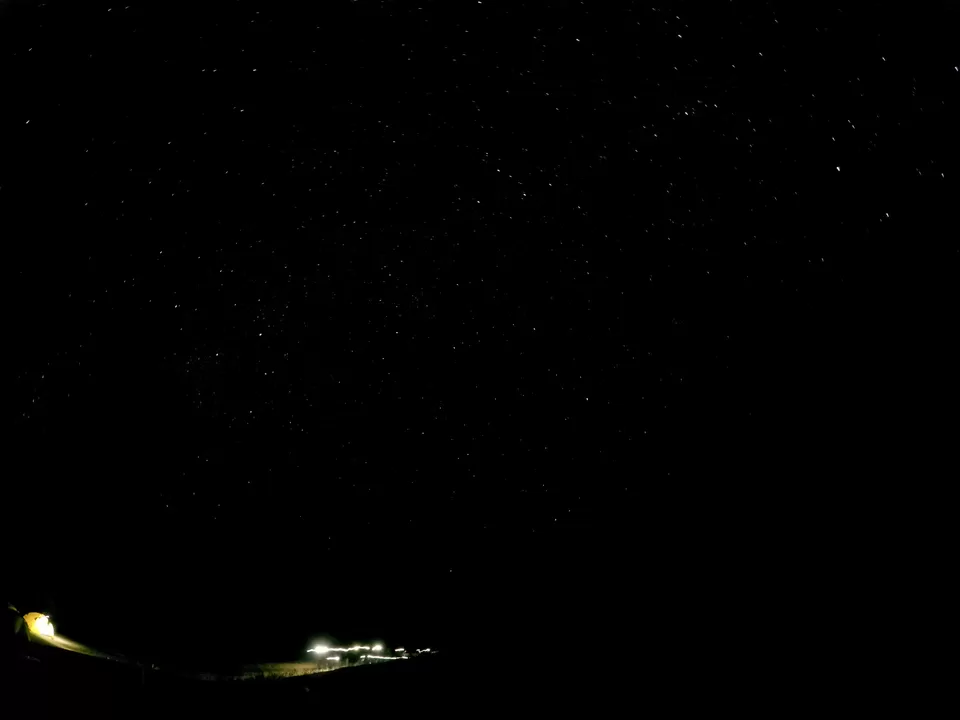
Day 3 : Julota (8,950 ft) to Pukhrola - Kedarkantha Base (10,800 ft)
We began at around 9 am the second day, which was supposed to be a trek of a smaller duration. This trek had gradual ascents and a steep ascent towards the end, but was still more challenging according to me, because we were trekking at above 10,000 ft altitude for most part of the trek. The steep ascents at such times can turn out to be much tougher. It becomes more and more difficult to breathe as the oxygen level begins to fall.


One of the highlights of the day's trek was the walk through the dense forests which disappear all of a sudden as we cross the tree line onto the lush green meadows. We were extremely happy when we saw a small patch of snow as we trekked towards Pukhrola, which we thought was the only snow we would see. Climbing through the pine tree forests, we trekked for around 4 hours and reached the campsite for lunch.
Pukhrola (10,800 ft), being on a flat land at the base of Kedarkantha, had the most stunning views of the all the surrounding peaks. The photographer in me was having a wonderful time, as were the fellow trekkers who told me to capture their memories.



That afternoon, we played cricket after we reached Pukhrola. All round view of the mountains and beautiful skies surrounded us. Playing cricket at 11,000 ft was just the start of what was one of the most extraordinary days in my life. We kept cursing the snow (or the lack of it), but little did we know what lay ahead of us.

As it began to get cold, we were called to play warming up games and some really exciting ones where everyone got involved. Hot tea, the need of the hour, was served at around 5 pm and darkness set in gradually. As we went inside the dinner tent, tiny flakes of snow made their way onto the barren ground. They gave us soup at 6 pm and we couldn't even dare to wash the mug in the ice cold water. That's when the couple started telling us their beautiful love story, which was well worthy of a movie, or even a long marathi TV serial.

It had started snowing then and we were told to gather in the dinner tent to listen to our guides tell us about the summit day. Generally, for the summit day of any trek, we need to be back from the summit before the snow starts melting, and for that, we have to start really early (we started at 4 am at Roopkund). But considering it was winter and it was snowing too, our trek leader decided to leave at around 7 am. After dinner, because of the continuous snowfall, we had nothing better to do outside, so we got in our tents and slept off a little too early. We were all hoping that the snowfall would stop late that night.
Day 4 : Pukhrola (10,800 ft) to Kedarkantha Summit (or not) and back to Hargaon (8,450 ft)
In the middle of the night, when I woke up and had to attend nature's call, what I saw outside blew my mind. There was around 6 inches of soft snow outside our tents, and I had to go out, which had already made my night miserable. The main problem was when we realized that it was just 11.15 pm. If the snowfall didn't end, our chances of the summit were diminishing. We went off to sleep. A few more hours into the night, I could hear my trek guides yelling out to everyone to shake their tents so that the snow could fall off. In heavy snowfall, the snow gathers on top of the tents and if not taken care of, the tents might get buried inside the soft snow. A similar thing had happened at Bhagwabasa (Roopkund base camp at 14500 ft), so we knew what was to be done then. We took turns in getting up and shaking the snow off until finally the alarm went off at 6.10 am.
The outer cover of the tent had saved our shoes from the snow, but the zips of the tent flap had frozen overnight. So, the challenge for everyone was to get out of their tents and put their shoes on (also go and complete the morning formalities). We were among the first to come outside, the heavenly sight graced us, which felt like a dream come true. This would surely beat all the 'imagine waking up to this!' posts on Instagram!



There was at least 3 feet of extremely soft snow outside and walking on it became a nightmare. Our shoes got covered by snow in no time and we could not stand outside for long as it was still snowing. Everyone who had gotten up made their way to the dinner tent. This sight had made us forget how the campsite looked the earlier day. Some were already busy making the 'before-after' pics. But this time, those clicks were priceless. In that snowfall, no one dared take their cameras out, but that's when our phones came to our rescue. Gloves were all covered by little snowflakes. Tents looked nothing similar to what they were the day before. The once bare Pukhrola was covered with a thick blanket of soft snow.



Once we were back into reality, we started assisting those who weren't able to get out by clearing the snow outside their tents. Everyone still had a glimmer of hope of making it to the summit. But when we got to the dinner tent (for breakfast), Ashwin was waiting to announce the bad news, which wasn't surprising at all considering what had happened over the last 12 hours. He announced that we had to descend but still they had two options because of the route taken by Indiahikes. We could either go back to Julota (our first campsite), but there was another batch of trekkers there. So we decided to go by the planned route (as so we thought). Everyone, mainly first time trekkers, had already made their mind to descend. The so-called traverse though required us to ascend for some time before climbing down. There was absolutely no chance we could trek through all that snow without our shoes getting full of snow. For the final ascent in snow, they always keep a huge sack full of gaiters at the campsite. Trekking in soft snow is just not possible without these gaiters, which prevent the snow from getting into the shoes. Despite of that, our toes had gone numb even before the trek began. We were told to be ready by 9.30, so we helped each other get the gaiters on. All of us were ready for a wonderful adventure, wearing our ponchos over our backpacks. At 10 am began one of the most adventurous treks I would ever be a part of. As usual we were leading, just behind the local guide.



Something inside me was saying that the summit was still a minor possibility, though it seemed ages away. We had no idea how much we had to ascend before the descent began. As we made our way through the zig-zag pathways made by our guide's footsteps, we realized that the more you thought when this was going to end, the more you thought how much more we had to ascend, the more painful it was. The best you could do is keep walking, keeping in mind that you'll have to weather the storm to see the rainbow on the other side. We asked the guide how much altitude we had gained, he said we were at around 11,500 ft. The issue that the head guide was also facing was the complete white-out caused by the snowfall. At this altitude, it was freezing cold (around -10 degrees), but we could barely feel it as we had 5-6 layers on. Every 10 steps, we heard a voice from behind, telling the guide to stop. The winds were as strong as they would ever be, which was the main reason for the drop in temperature. Nobody, not even the locals, had experienced snowfall of such intensity this early in the winter. We realized that we'd been the most lucky batch, because the early batches had missed the snow and the next batch could not come to Pukhrola after seeing what had happened. We had to wait and face the other way in order to evade the stormy snowfall, the snow blizzard as they call it.


After 2.5 hours of trekking in the snow blizzard, we reached 12,100 ft. Having gone within 400 ft from the summit, I really wanted to get to the summit and my hope was slowly turning into reality. As the guide later told us, he would have taken us and completed the summit if only the three of us were there, which wasn't the case. For a team of 23 trekkers, it was impossible to make it to the summit, some couldn't even believe they'd made it that far. At one point because of the whiteout, even the guide seemed to lose his way. He made us wait at a relatively safe spot, and the two guides went off route and were able to find the right way. We were told to follow them and so began the descent finally, for which some of us had waited forever. The conditions remained the same for a while, the only difference was that we were descending.

The only motivation that kept all of us going was the presence of a 'Maggi point' around 10 minutes away. The guide told me to lead the way (make the way, footsteps through the soft snow) and stop at a point on the trail. There I realized how tough that job was, compared to just following his footsteps. It's always tougher to make your own way rather than follow someone's footsteps. We approached the break point and there was nobody who would've denied the fact that it had been hectic, both physically and mentally. Suddenly the blizzard eased out, the sky became clear and descending felt like an easy affair. We could now see the metaphorical rainbow in front of us. Taking off our backpacks finally, itself felt like a mini-victory for all of us after what we'd gone through. We ate hot maggi and some didn't hesitate in taking 2-3 cups of chai.

After a much needed break of 45 minutes, we began the last stretch of our descent of about 30-40 minutes before we'd reach the Maalvi campsite which was higher than Hargaon. They had to manipulate the route a bit again because of the snowfall. The only thing we couldn't see was the beautiful lake - Juda-ka-Talab as we took a shortcut to reach the campsite. We spotted the campsite and took off in the snow, reaching Maalvi (9500 ft) at 4 pm. They had to bring down all the tents to prevent damage. That was the first chance since morning that I got to take out my camera. Till everyone reached, we took rest, contemplating what all we had gone through since the day began.

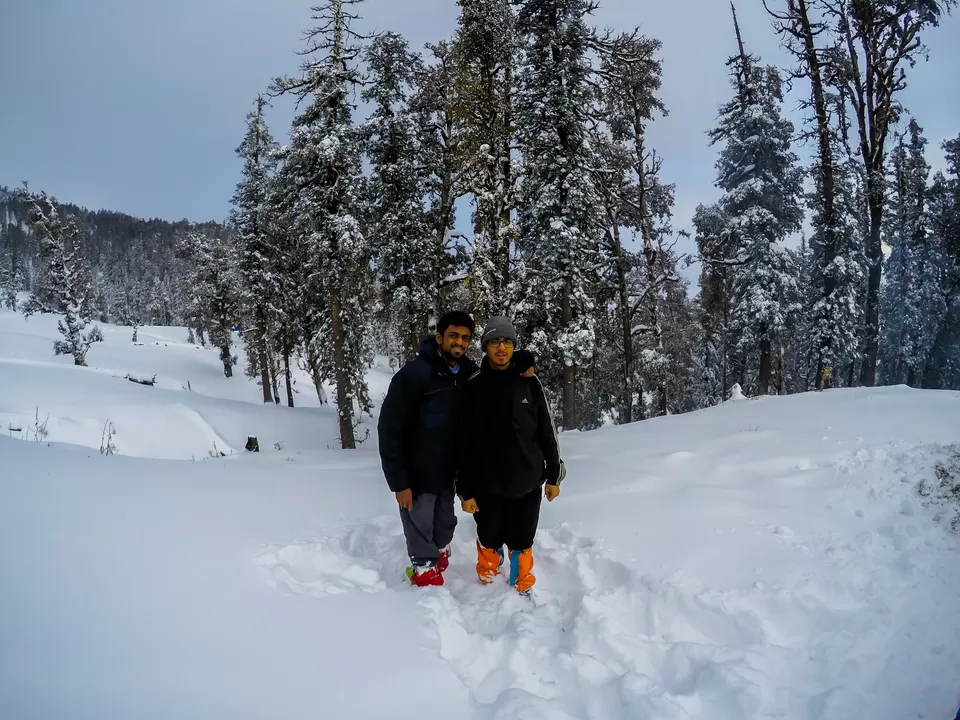
There were two choices; either we could have lunch there till they set up the campsite at Maalvi (which would be a mistake considering what had happened at Pukhrola), or we could descend to Sankri (6,400 ft, the trek endpoint) the same day, which would take around 5 hours. Despite of being drained out, we took the wiser option and started descending.




This was the most challenging part of the descent because, with loss of altitude, the snow kept reducing and it became more and more dangerous of everyone to walk on it. We made it through the dense forests, passing the campsites of various other groups on the way. As it became dark, it became tougher for us to walk without slipping. With our head lamps on, this part of the late evening trek also became a memory to cherish.

We reached a point when we could see the snow getting converted into rain droplets. This was the first time we had rain during the last few days. The word had reached their correspondents in Sankri and sudden arrangements had to be made for our team. Some local guides joined our team and began to motivate slow movers to complete the trek. That's when we got to know the seriousness of what was going on. This was just a small part of an evacuation which lasted around 12 hours in which we climbed from 10800 to 12100 feet, overcoming a snow blizzard where the temperatures touched -14 degrees, and started descending to our base Sankri. The guides along with the zig-zag route, which couldn't have been more obvious, helped all the trekkers reach Sankri safely.
The evacuation which comprised of a 5-hour trek to Sankri, ended at around 10 pm when every trekker reached the guest lodge safely. That night the sleep was peaceful and the level of achievement and satisfaction in the minds of each of the 23 trekkers and the guides was unequaled.
Day 5 : Sankri to Dehradun
As we wound up the trek inside three days, Ashwin conducted the debriefing session and everyone departed to Dehradun a day earlier than planned.
Those who found it nightmarish during the trek, also felt good after the completion of the trek. This gave many a sense of satisfaction that they couldn't have gotten even if they'd made it to the summit. That's why they say, the struggle during the journey to success is what makes it taste good. As my friend Divyaj says, one always leaves a piece of his heart behind in the mountains. It had been that kind of experience which would change lives for the good. If you're stressed about life, visit the mountains and it will change your mindset completely. If you feel you can't answer the career question, come to the mountains and you'll discover yourself better. Mountains seem to have answers to almost all the questions you come with. I would recommend everyone to take time out from their busy life and go and visit the mountains. Trekking in the Himalayas is one thing which no one who has done it, will ever have enough of it. This is what rejuvenates me and keeps me going when I'm about to surrender.

Frequent searches leading to this page:-
dehradun m ghumne ki jagah, offbeat things to do in dehradun, tourist places in dehradun with images, romantic places in dehradun, places to visit near dehradun railway station



